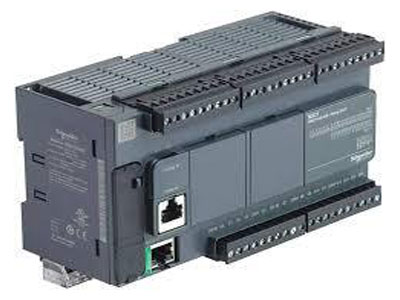Key Takeaway
Upgrading to a more advanced PLC system can significantly boost your ROI. A modern PLC system enhances production efficiency by up to 25% and reduces downtime by 30%. This leads to higher productivity and lower maintenance costs. Advanced PLCs offer better diagnostics and predictive maintenance capabilities, minimizing operational disruptions. By improving process control and reliability, you can achieve faster production cycles and higher-quality outputs. The initial investment in an advanced PLC system pays off through increased efficiency, reduced operational costs, and overall improved profitability.
Importance of ROI in PLC Upgrades
When considering an upgrade to a more advanced PLC (Programmable Logic Controller) system, understanding the ROI (Return on Investment) is crucial. ROI is a measure of the profitability of an investment, calculated by dividing the net profit by the initial cost. In the context of PLC upgrades, it helps determine whether the financial benefits gained from the new system outweigh the costs incurred during the upgrade process.
Investing in an advanced PLC system can lead to numerous advantages such as increased efficiency, reduced downtime, and enhanced automation capabilities. However, these benefits come with significant costs, including the purchase of new hardware, software, and potential training for staff. Therefore, assessing the ROI helps businesses make informed decisions about the feasibility and timing of the upgrade.

Factors Affecting ROI
Several factors influence the ROI of a PLC upgrade. First, the initial cost of the new PLC system, including hardware, software, and installation fees, plays a significant role. High upfront costs can reduce the immediate ROI, but these expenses may be justified by long-term gains.
Second, the efficiency improvements brought by the new system are critical. Advanced PLCs often offer better processing speeds, increased reliability, and improved functionality, which can enhance overall productivity. By reducing downtime and increasing production rates, these improvements can significantly impact the ROI.
Third, the maintenance and operational costs associated with the new system must be considered. A more advanced PLC system might reduce maintenance needs due to improved reliability, but it could also require specialized skills for troubleshooting and repairs. Balancing these costs is essential for accurately assessing the ROI.
Finally, the lifespan and scalability of the new PLC system can affect the ROI. Investing in a system that can adapt to future technological advancements and business growth can provide long-term financial benefits, making the initial investment more worthwhile.
Calculating ROI for PLC Upgrades
Calculating ROI for a PLC upgrade involves several steps. Begin by determining the total costs associated with the upgrade, including purchase, installation, and training expenses. This forms the basis for your investment.
Next, estimate the financial benefits the new system will bring. These can include increased production efficiency, reduced downtime, and lower maintenance costs. Quantify these benefits in monetary terms to provide a clear comparison against the costs.
The formula for ROI is:
ROI
=
(
Net Profit
Investment Cost
)
×
100
ROI=(
Investment Cost
Net Profit
)×100
Net profit is calculated by subtracting the total costs from the total financial benefits. For example, if an upgrade costs $100,000 and is expected to generate $150,000 in benefits, the net profit would be $50,000. Using the formula, the ROI would be 50%.
This straightforward calculation provides a snapshot of the financial viability of the upgrade, helping businesses make informed decisions.
Examples of Successful PLC Upgrades
Many industries have successfully upgraded to advanced PLC systems, reaping significant benefits. For instance, a manufacturing plant replaced its outdated PLCs with a modern, high-speed system. The upgrade reduced downtime by 30%, resulting in a 20% increase in production capacity. This improvement translated into a substantial boost in revenue, with the ROI calculated at 60% within the first year.
In another case, a food processing company upgraded its PLC system to enhance automation and data collection capabilities. The new system improved product quality and consistency, reducing waste and rework. As a result, the company saw a 25% reduction in operational costs and a 40% increase in efficiency. The ROI for this upgrade was 70%, demonstrating the tangible financial benefits of investing in advanced technology.
These examples highlight how upgrading to a more advanced PLC system can lead to significant improvements in efficiency, productivity, and cost savings, ultimately resulting in a high ROI.
Tips for Maximizing ROI
To maximize the ROI of a PLC upgrade, consider the following tips:
Thorough Planning: Conduct a detailed analysis of your current system and identify specific areas where improvements are needed. This ensures the upgrade addresses the most critical issues.
Cost-Benefit Analysis: Perform a comprehensive cost-benefit analysis to understand the financial impact of the upgrade. Include all potential costs and benefits to get an accurate ROI calculation.
Employee Training: Invest in training for your staff to ensure they are proficient with the new system. Proper training can maximize the benefits of the upgrade and minimize downtime during the transition.
Vendor Support: Choose a reputable vendor that offers robust support and maintenance services. Reliable vendor support can reduce unexpected downtime and maintenance costs.
Scalability: Select a PLC system that can scale with your business. Investing in a system that accommodates future growth can provide long-term financial benefits and improve ROI.
Conclusion
Upgrading to a more advanced PLC system can offer substantial financial benefits, including increased efficiency, reduced downtime, and enhanced automation capabilities. By understanding and calculating the ROI, businesses can make informed decisions about the feasibility and timing of such upgrades. Careful planning, cost-benefit analysis, and considering factors like maintenance and scalability can maximize the ROI, ensuring the investment aligns with long-term financial goals. With the right approach, PLC upgrades can significantly contribute to the success and competitiveness of industrial operations.
